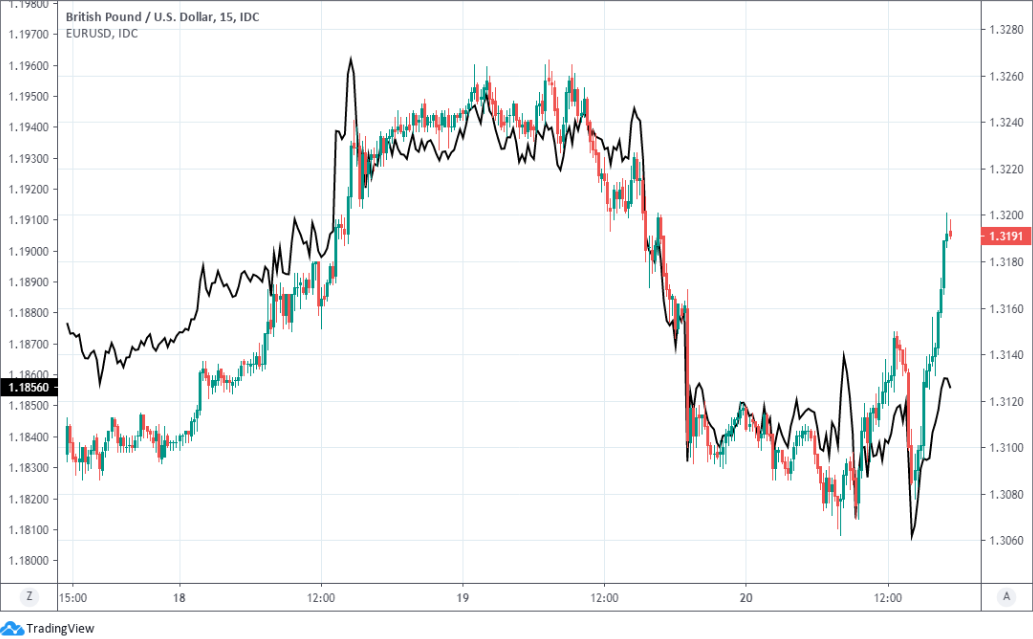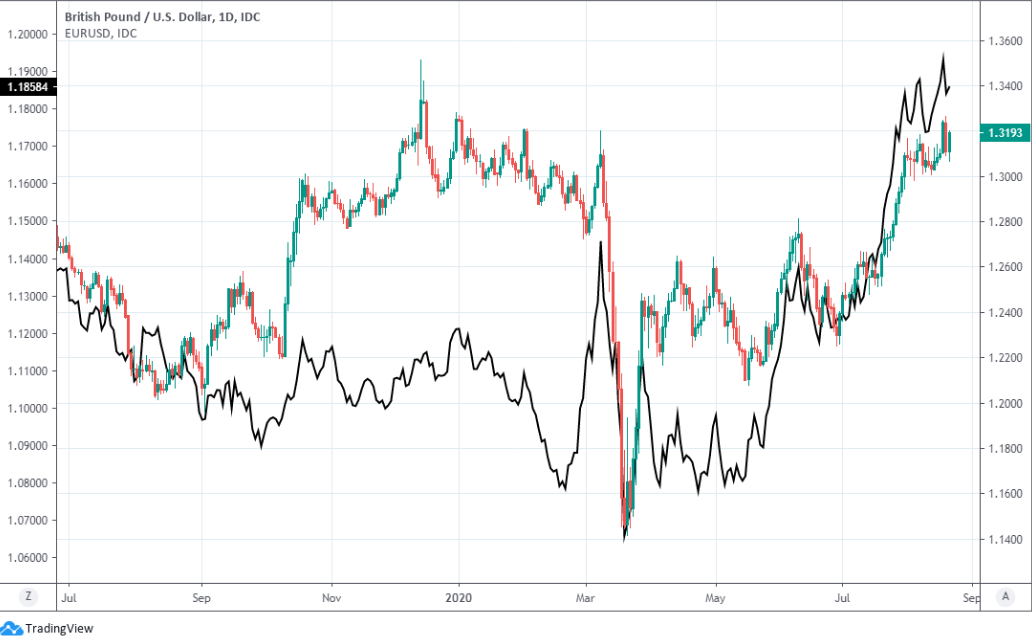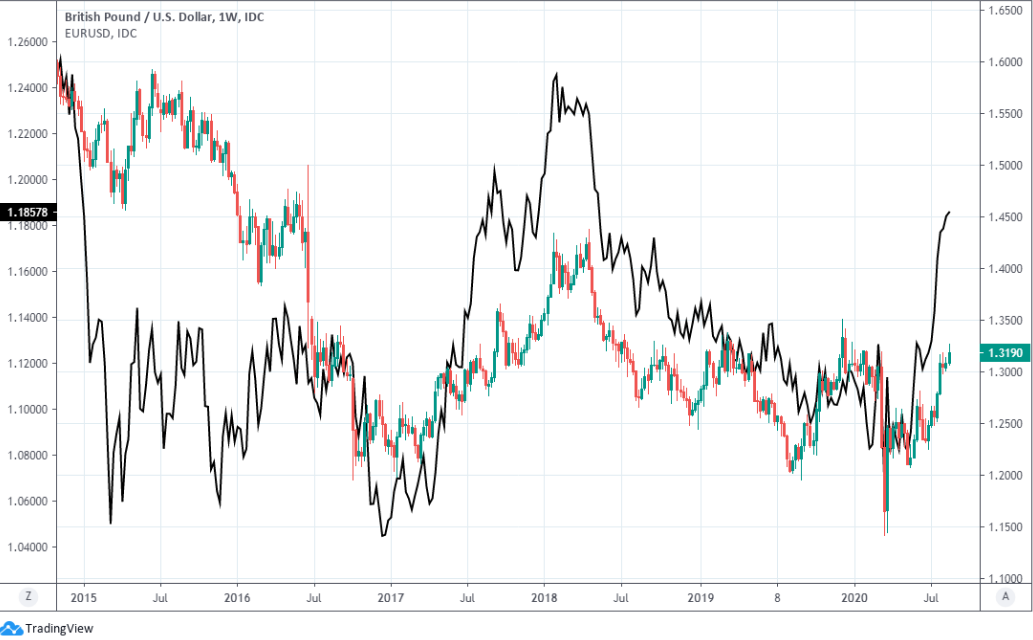Pound-to-Dollar Rate Past Its Best says ABN Amro, as Pantheon Macro Eyes Brexit Risks
- Written by: James Skinner
-

Image © Adobe Images
- GBP/USD spot rate at time of writing: 1.3199
- Bank transfer rate (indicative guide): 1.2849-1.1941
- FX specialist providers (indicative guide): 1.3013-1.3092
- More information on FX specialist rates here
The Pound-to-Dollar exchange rate advanced back toward earlier highs in volatile trading Thursday but may already have seen its best days at least until next year, according to strategists at ABN Amro, who've been seconded by Pantheon Macroeconomics with concerns about the Brexit process.
This week's Brexit trade talks were reportedly set to end without a compromise from either side, according to reports from Wednesday, though the government is aiming for an agreement by September and Pound Sterling was still climbing into the end of Thursday's European session where large major currencies were in favour with investors and the smaller majors out of favour.
Sterling trailed only the Franc in the major currency universe, with the Swiss unit the days top performer, although the Japanese Yen also advanced while the U.S. Dollar itself did well against commodity currencies with the exception of the Canadian Loonie.
There was much back-and-forth between majors and the Dollar, with the greenback starting on the offensive in moves that many analysts attributed to minutes of the latest Federal Reserve meeting, only for Sterling, the Euro and others to then turn the tables as the session drew on.

Above: Pound-to-Dollar rate shown at 15-minute intervals alongside Euro-to-Dollar rate (black line, left axis).
"Increased intraday volatility is the result of the extreme positioning in the euro but also in gold. Whereas the euro and sterling still made new highs versus the dollar, gold prices struggled," says Georgette Boele, a senior FX strategist at ABN Amro, who looks for GBP/USD to hit 1.25 by the end of September and 1.30 by year-end. "We expect a lower EUR/USD in the near-term because of modest position liquidation, some improvement in dollar sentiment, some deterioration in euro sentiment or some safe haven demand for the dollar. We also expect a lower GBP/USD because of more focus on Brexit uncertainty, weaker UK data and less negative sentiment towards the dollar."
Volatility picked up with the Pound-to-Dollar and Euro-to-Dollar exchange rates whip-sawing in the noon hours, as worse-than-expected weekly unemployment claims from the U.S. were followed by a stronger-than-expected uptick in the Conference Board leading indicator for the U.S. economy. Data emerged amid a number of U.S. bond auctions and with U.S. stocks higher while major equity benchmarks slumped across Europe. Precious metals prices rose while commodities like oil came under pressure.
Price action comes with the Dollar having been forced to more-than two-year lows against a range of currencies including the Euro, which hit its highest level since April 2018 earlier this week and dragged Pound Sterling higher along with it. The Pound-to-Dollar rate had traded up to 1.3270 on Wednesday, marking its highest level for the 2020 thus far before beating a hasty retreat.
"Sterling has benefited from the recovery in global investors' risk appetite, but remains beset by Brexit. The pound would be $0.15 higher at present, if it simply traded in line with rate expectations and the VIX. The sterling risk premium will grow as the Brexit deadline nears; ultimately, though, we expect an extension," says Samuel Tombs, chief UK economist at Pantheon Macroeconomics. "We expect sterling to fall back to about $1.25 in October, before recovering to $1.30 after the extension is confirmed in December."

Above: Pound-to-Dollar rate shown at daily intervals alongside Euro-to-Dollar rate (black line, left axis).
U.S. economic prospects and the resulting appetite for the greenback are an important influence on the Pound-to-Dollar and Euro-to-Dollar rates, although Brexit, the domestic economic outlook as well as the ebb and flow of risk appetite all matter too. Meanwhile, and over on mainland Europe, the numbers of new coronavirus infections being detected in each day are increasingly garnering attention among analysts and may soon impact appetite for the Euro.
The Pound-to-Dollar rate has benefited from the May-to-August run higher by the Euro-to-Dollar rate that has roots in investor excitement over the EU's coronavirus recovery fund, so it could suffer too if the rally falls apart. The market has bought hook, line and sinker the idea that this package of EU administered grants and loans will lead to a European outperformance of the U.S. economy, although that remains to actually be delivered and the Eurozone track record relative to the U.S. is not a very good one.
Furthermore, the recovery fund was not designed to aid the Eurozone through a protracted epidemic that includes a second wave of infections. It just enables some debt-laden Eurozone economies to almost-match the expenditure of other less indebted countries within the bloc so if further infections or actions taken as a result of them were to disrupt the recovery heading into year-end then appetite for the Euro and Pound could take a knock.
"While the success of the UK’s job furlough scheme has prevented the unemployment rate from rising as far as it has in the US, an increase in UK unemployment has been delayed rather than avoided altogether. This is a key reason why we expect an impressive initial rebound in the UK economy to give way to a slower recovery and why we think that the UK recovery will lag behind the recovery in the US," says Ruth Gregory at Capital Economics. "Over a quarter of the workforce were signed up to the UK and euro-zone wage-subsidy schemes at their peak. That meant that they were still officially counted as employed. By contrast, the US’s job retention scheme, the Paycheck Protection Program (PPP), may have kept a far smaller 1.4% of the workforce employed, meaning that temporary layoffs in the US have surged."

Above: Pound-to-Dollar rate shown at weekly intervals alongside Euro-to-Dollar rate (black line, left axis).










